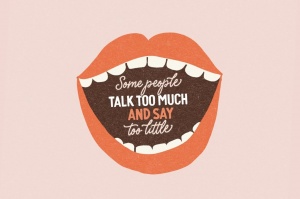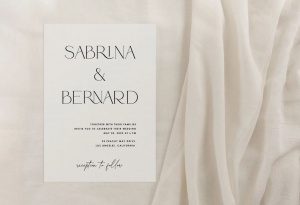Do you enjoy online teaching? Do you feel like you would like to provide knowledge for your students in a well-structured, fun and engaging form? Would you like to have an additional stream of passive income? If you answer with Yes to any of the above questions, it is worth considering the idea of creating an online course.
Making the decision is the first step. Once you have decided that this will be your next project, let us help you with advice on how to build your online course from scratch?
1. Choose the topic of your online course
Everyone who wants to share their knowledge can create an online course. Any experience in the sphere of online teaching, public speaking, writing or other activities in education can be highly beneficial in creating an online course.
- Make a list of the topics that bring you joy and where you have the most knowledge, skills and experience that can be useful to share.
- Then make a list of the topics that your students enjoy and have interest in. How to do that? Create a questionnaire with a variety of topics and let your students rate them.
- Find the points where the two lists match and you will have a very good idea of what the possible topics for your course are. Keep in mind that the most engaging topics are the ones that provide a solution to a problem. It doesn’t hurt to perform research on every topic concerning what the competition is, how profitable it is and etc. Don’t forget that creating an online course is a business venture.
2. Write down the learning objectives

Create a plan for your course. Research your audience.
- How old are your students, and what interests do they have?
- What learning challenges might they experience during the course?
- What learning objectives would you like to accomplish with the online course?
It is beneficial to write down the short-term goals and the long-term objectives. This is the step where you should plan the content and divide it roughly into sections.
There are a few tips that can help you in organizing the content: - Choose the platform for online learning that you are planning to use. The right choice of the Learning Management System (LMS) will make your work of creating the course easier and more enjoyable. The platform provides the possibility to host the course, as well as to track the progress of the course and the students, to store the materials and much more.
- Use an online whiteboard, like VEDAMO, to create the lessons. Teach the lectures live, record them using the features in the online whiteboard and add the sessions to the LMS as part of the course. Depending on your ideas for the course, you can combine synchronous (live lessons) with asynchronous (students learn at their own pace) learning methods.
- Create templates using the online whiteboard. Be sure to experiment with the various features including drawing, adding text and charts, adding media, etc. Add the templates as supportive materials for your students to download as part of the course.
- Gather materials via research on the Internet, libraries, etc. and also, don’t hesitate to add any content you have on the topic, such as completed lessons, blog posts, videos, books and many more.
3. Prepare proper equipment for creating of the online course
The quality of the recording, the sound and the editing of the online course is almost as important as the quality of the content. It is a matter of fact that even if you offer the most valuable content, if the sound is low quality and students are not able to listen to the sessions, it will not help you in achieving your goals. Gather the highest-quality equipment you can afford and spend some time testing it out and learning how to use it correctly. The equipment depends on the media you are planning to include. For instance, if your courses consist of voice-over and lessons with speaking, you need a proper microphone. If you are planning on recording lessons where you will be on camera, you have to get yourself a decent camera or a webcam that records HD videos.

Use software of your choice for screen recording to include in depth instructions, tutorials, presentations etc. in the lessons. Teaching on the online whiteboard is an excellent way to create the most authentic and engaging learning experience for the students even with the asynchronous lessons where the sessions are pre-recorded.
4. Ready for action
After you have created the content and you have prepared the equipment for the online course, it is time for action. It is absolutely normal to feel nervous and to lack confidence at first. Test the whole equipment with a few shots. Be sure to prepare a script for each video that will guide you through the lesson. Stick to simple sentences with clear explanations. Imagine that your students are standing in front of you and start recording the lessons. After the first lesson is recorded, take your time to edit and improve the quality. It is essential to create the video in a format that will be accessible for your students.
5. Price and Advertise
You might be thinking that creating the course is the most challenging part, but you will be surprised how difficult it can be to price your course correctly. The perfect option is to choose a price that is attractive for students but also covers the main costs of creating the lessons.
The most common approaches are a one-time payment of the course or the subscription method. In the first case, students pay once for the course which offers them full access to the lessons whenever they want. The subscription option requires regular payments that reoccur at a certain period of time – annually, monthly etc. to provide students with access to the sessions and the materials.
When pricing the course, you need to perform research on the competition in the chosen niche. In this way you will get a better understanding of the earning potential of the course and will market it better.
There are many ways to advertise your online course. Social media is one of the most efficient channels for promoting any new project. Webinars, Podcasts and Blog posts are also very effective in promoting the course. You can also use paid advertising.
6. Stay connected to your students

Even though the online course is considered a passive stream of income, it is not completely passive if you are doing it right. Be there for your students in case they have questions or they need help in understanding the materials. The online whiteboard is an awesome tool for organizing live lectures, consultations etc. for follow ups and additional training.
A great way to engage with the students is by participating in groups together, like a Facebook group especially created for the participants in the online course where everyone can share, discuss, ask questions and provide help.
Creating an online course from scratch is a time-consuming project that is worth the efforts and the patience. Expand your horizons in online teaching with this great opportunity to provide well-structured valuable content for your students.


